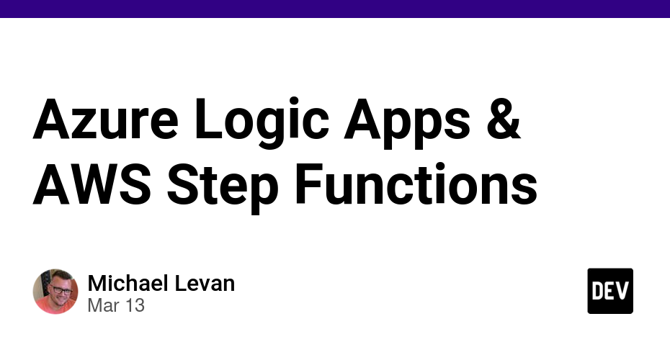Dev
3w
144

Image Credit: Dev
Azure Logic Apps & AWS Step Functions
- Azure Logic Apps and AWS Step Functions offer graphical approaches to deploying workflows, suitable for teams lacking programming expertise or seeking simplicity in workflow implementation.
- These tools aim to reduce complexity and allow engineers to create complex workflows without extensive coding, serving as No-Code solutions.
- Logic Apps and Step Functions help visualize workflows with cause-and-effect relationships, simplifying the process and directing actions from start to completion.
- AWS Step Functions provide a straightforward way to set up no-code solutions, guiding users through template selection and customization.
- Within Step Functions, tasks can be edited and configured according to requirements, with options for exporting configurations and generating diagrams.
- In contrast, Azure Logic Apps, while offering similar functionalities, caters to specific actions like those in Buffer, a social media service.
- AWS Step Functions are considered more developer-friendly, while Azure Logic Apps are perceived as more suitable for specific actions outside engineering.
- Overall, AWS Step Functions are perceived as better suited for engineers looking for a simpler way to handle workloads, while Azure Logic Apps are more tailored to non-engineering tasks.
Read Full Article
8 Likes
For uninterrupted reading, download the app